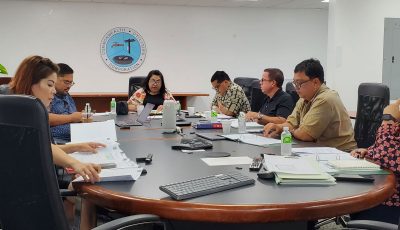CUC: Rota incinerator not cost-effective
The Commonwealth Utilities Corp. believes it is not cost-effective to put up a separate incinerator on Rota to dispose of the island’s waste oil, but favors the installation of a smaller capacity incinerator there.
Rota produces about 5,000 gallons of waste oil per year, which CUC legal counsel James Sirok described as minimal.
Comparatively, Saipan produces about 150,000 gallons of waste oil per year.
In CUC’s status report to the U.S. District Court for the NMI, Sirok said that CUC currently ships Rota waste oil to Saipan as the Guam Power Authority no longer accepts waste oil.
Saipan has two waste oil incinerators at CUC power plants 1 and 2 in Lower Base.
Considering that Saipan power plants produce around 150,000 gallons of waste oil per year, Sirok said that Rota’s yearly waste oil volume would just be a small addition to the waste stream on Saipan.
Sirok said that mobilizing contractor GRESCO to load and ship two years’ worth of waste oil will cost CUC approximately $40,000.
Based on CUC’s price quotations in 2014, prices for incinerators range from $136,000 to $340,000, he said.
CUC estimates that an incinerator core has an approximate life span of three years.
Sirok said that based on the 2014 quotations, when considered with the need to replace a core every three years, and further considering the minimal amount of waste oil produced on Rota per year and the current cost to ship this waste to Saipan for incineration, it would not be cost-effective to have a separate incinerator on Rota.
However, Sirok pointed out, CUC believes that having a smaller capacity incinerator on Rota for the island’s disposal of waste oil is “less risky, environmentally sound, and more efficient for CUC.”
Sirok said CUC is willing to take on this obligation and suggests that monies from the Technical Manager for Oil fund can be used for this small incinerator.
Sirok said if the task of purchasing and installing an incinerator on Rota or Saipan is performed through the Engineering and Environmental Management Company, CUC feels that a higher price can be expected.
Gilbane Federal is the court-appointed EEMC that is tasked to oversee several of CUC’s projects.
Sirok said the issue of using the TMO fund for this purpose has not been presented to or discussed with the EEMC, U.S. Environmental Protection Agency, and the U.S. Department of Justice.
Sirok said CUC may need assistance from the court/EEMC to obtain EPA approval for an incinerator.
U.S. District Court for the NMI designated Judge David Carter ordered CUC to prepare a status report in preparation for a status conference on Feb. 21, 2017. The incinerator was among the issues that Sirok discussed in CUC’s status report.
Carter recently tasked representatives from CUC, EPA, and EEMC to go to Rota and assess the need to install a separate incinerator for the disposal of the island’s waste.
Carter raised at the recent conference his concerns, among other issues, over the separate incinerator for Rota.
The Rota incinerator is among the three principal projects that have been identified for Department of the Interior funding next year according to Bradley R. O’ Brien, U.S. Department of Justice Environmental Enforcement Section senior attorney.



























